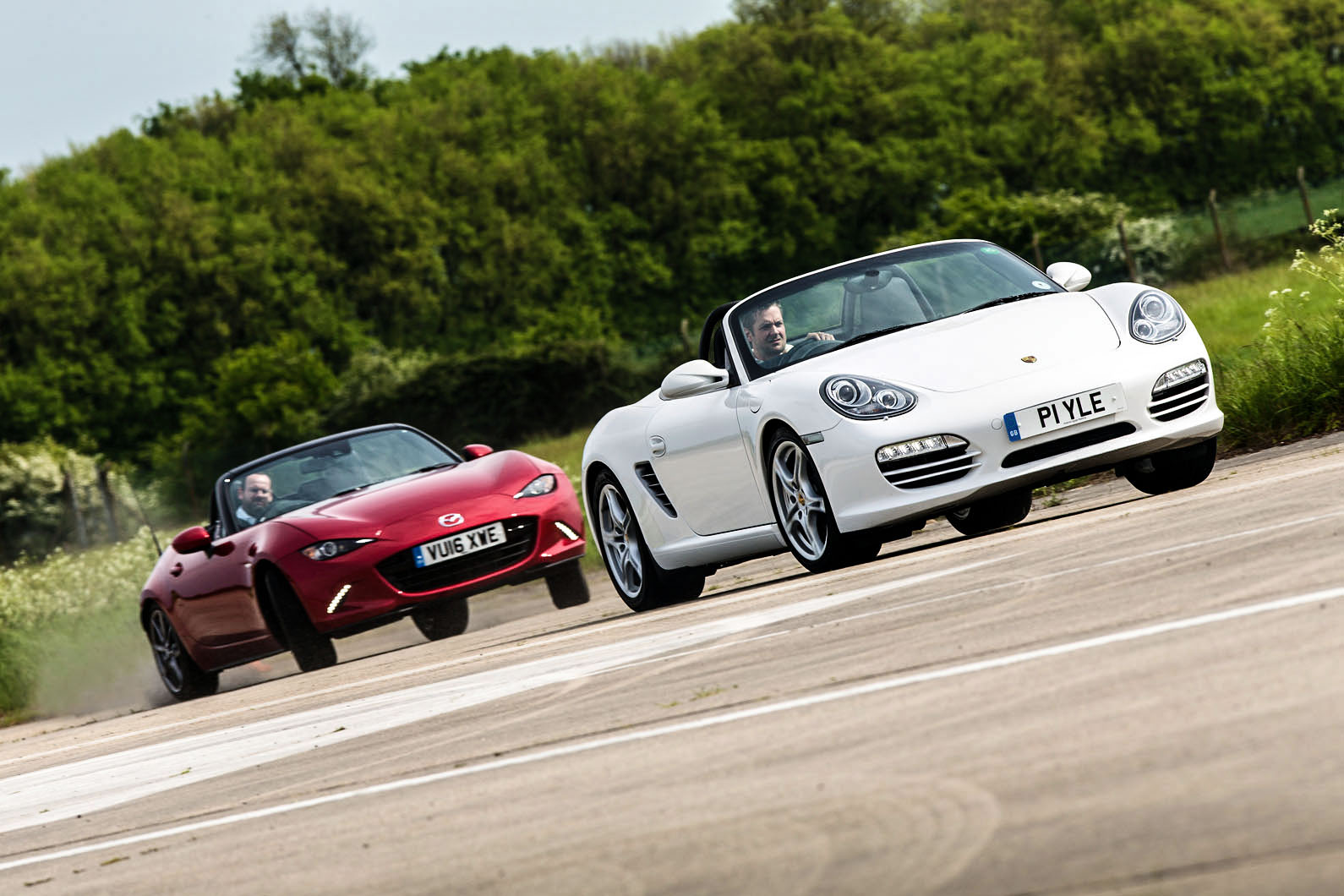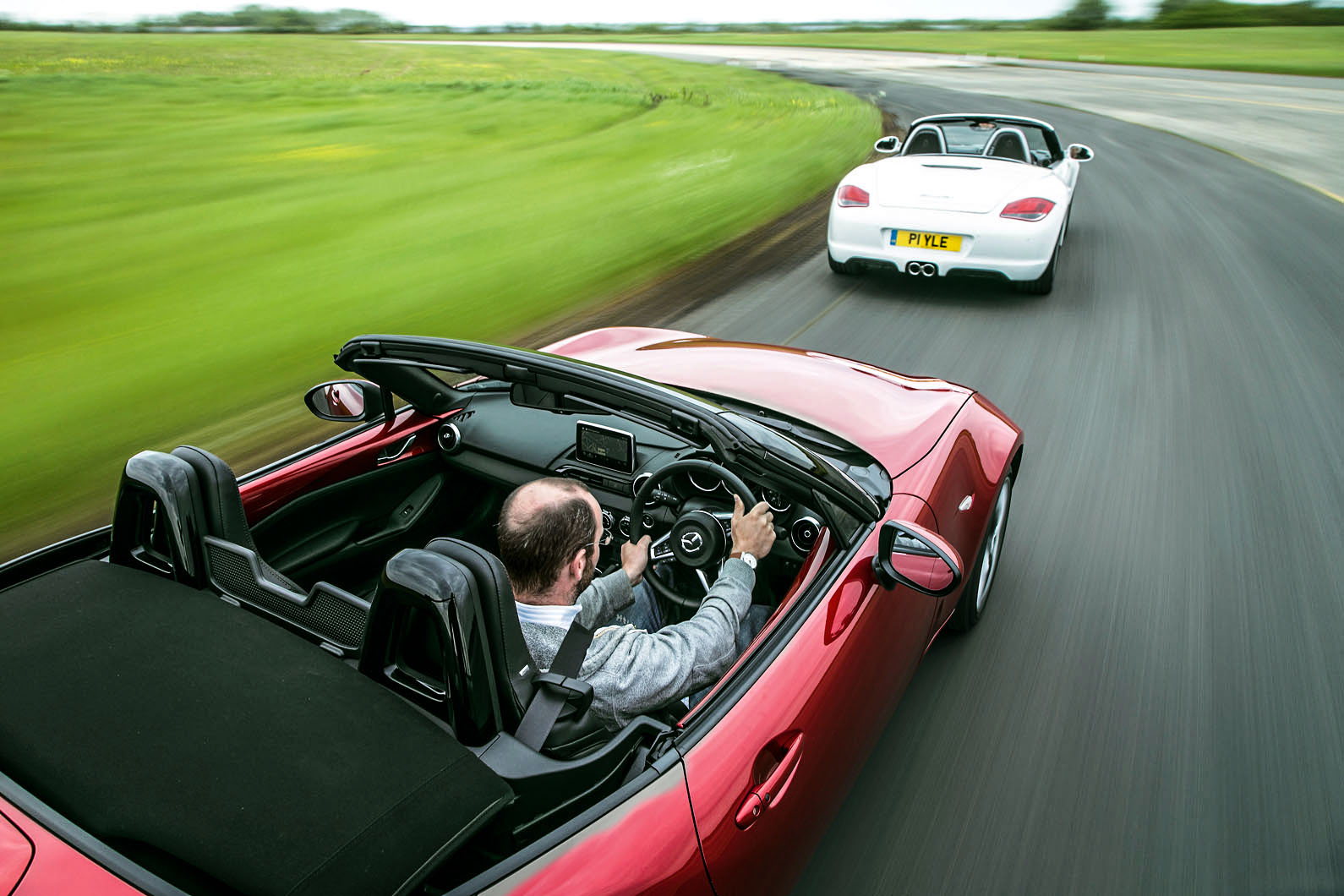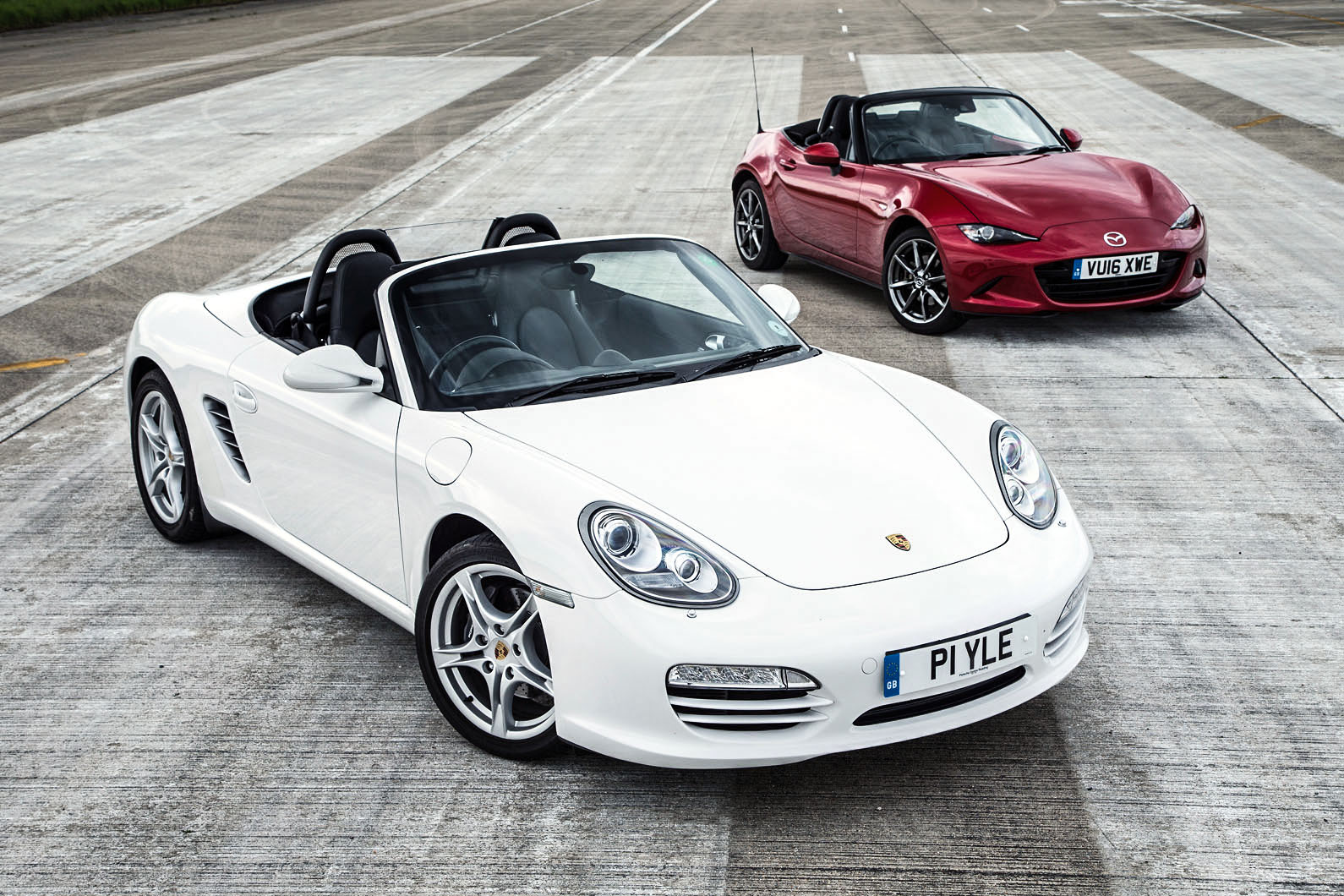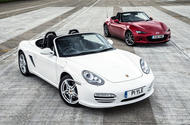The competition between these two roadsters isn’t as clear-cut as it may seem; will a new MX-5 outshine a second-hand Boxster?
A Porsche Boxster versus a Mazda MX-5? Well, we all know which way this one’s going, don’t we? Or do we? Because the latest MX-5 is quite the thing, as you’ll know. It’s small, light, agile – at its thin-Elvis best.
We’ve ummed and ahhed about which is the perfect spec for the latest-generation MX-5 roadster, but although the purity of the base 1.5-litre model is appealing, the 2.0 is not all that much heavier and Sport Nav trim gives you a limited-slip differential, Bilstein dampers that keep its body movements better controlled than standard and a strut brace to add rigidity. As such, then, it feels more like an old-fashioned sports car, with a pleasing engine note and snappy gearshift and just about enough power to make it throttle adjustable. Equipped like this one, it cost £23,295 when new.
That’s around £4500 less than Chris Pyle, who generously gave up his time and use of his car for the day, paid for the white Boxster you see pictured next to it, but that makes it close enough to be a valid comparison. This Boxster is a 2.9-litre 2011 model (a facelift or ‘gen 2’ 987-series car), with 33,600 miles on the clock, which Chris bought to replace an earlier model. So good he bought another one, in short.

That it cost as much as it did is down to two things. First, Chris wanted it to come with a two-year warranty, which added £2000 to the price, but it did mean peace of mind and the car went through a 111-point service before he took custody of it.
Secondly, as with most Boxsters, its original owner didn’t skimp when specifying it in the first place. The vast options list includes – deep breath – a Sport Chrono Pack Plus, leather seats, embossed headrests, a wind deflector, PDK dual-clutch automatic transmission with sports steering wheel and shift paddles, a Comfort Pack, heated seats, park assist, an Infotainment Pack, auto air-con and 18in Cayman wheels. Many of those are £1000-plus options, and although I don’t have Porsche’s 2011 configurator to hand any more, it’s a fairly safe bet that together they’d have added the best part of 10 grand to the £35,000 or so list price of the time. To those options, Chris has since added twin round exhaust pipes, because – and I agree with him – he thinks they look cooler.
At the time, as now, there wasn’t a better sports roadster than the Boxster, and we figured that the 2.9 was as good a bet as the 3.4-litre Boxster S. But, as now, the Porsche was more expensive than a Mazda that, back then, wasn’t as delicious as the one on offer today, if you follow. So the MX-5 could draw blood.
There are two things I want to know, then: which of the two is the more recommendable car to buy now, and which is the better sports car now? I have a hunch that I know the answer to both things, but it’ll want a back-to-back test to know for sure.

The Mazda, then, has the advantage of being new. That means its rubber bits and joints and bushes are all new, too, and that, I often find, makes a big difference to the way a car drives. New cars feel tight and responsive, in the way they were designed to. Buy a new one and you’ll also get a three-year/60,000-mile warranty – and if you drive 60,000 miles in three years in one, you’re a better person than I am, because the fact that there are great things about the Mazda being small doesn’t mean there aren’t some downsides, too.
First, you feel rather like you’re sitting on it, not in it. The seats don’t adjust for height and the steering wheel doesn’t adjust for reach, so you end up perched and the wheel can feel too far away.
Otherwise, ergonomics are good. Everything is in the right place, because there aren’t that many things to put in the wrong place. Worried about glovebox ergonomics? It doesn’t have one. Hence it weighs 1075kg, which is remarkable for a new car. I still remember the glee on a Mazda engineer’s face when, before he and his colleagues had released any specs, he asked me to guess how much a basic 1.5-litre car weighed. “About 1100kg?” I asked, thinking I was being optimistic. “Less than 1000!” he said. “Extraordinary,” I thought, then as now.
The Porsche weighs rather more – 1335kg – because it’s bigger (4.3 metres long versus 3.9m) and because it has an extra 0.9 litres and two cylinders, and an electric roof. And either its seats are set lower or the window sill is higher than the Mazda’s – or both – because it feels cosier yet more spacious at the same time. The driving position is great and there’s decent oddments storage.

Chris’s example still feels good, even given its age – but then, at 33,600 miles, there’s nothing tired about it. In fact, regular use is best; the car is not a leggy example but has been used enough to avoid some low-mileage Boxster problems such as corroding brake discs and a battery that doesn’t like to hold charge. By this age, the Boxster’s engine was generally sound, although some earlier cars suffered cylinder bore scoring. Overall, reliability is good. Coil springs can corrode, as can damaged wheels, and uneven tyre wear suggests things have been knocked out of alignment.
When things do go wrong, they can be expensive, mind, so it’s worth ensuring there’s a full history and you call on an expert to inspect it, should you need one. Many owners find that Porsche Club Great Britain, which has a Boxster Register (and helped to put us in touch with Chris) is invaluable.
When new, the Boxster’s flat six engine produced 252bhp at 7200rpm, and it still feels like it makes that today. The car rides well and corners flatly, with great composure. It also steers accurately and with terrific feel. The gearshift doesn’t have the rapid response of the latest PDK system, but it’s plenty good enough.
It feels, in fact, an altogether more serious proposition than the MX-5, whose roll movements fall more quickly, slightly unsettlingly, while the steering is more remote. With 158bhp, it’s slower than the Porsche, and because it has four cylinders, it doesn’t sound as good, either.
But as a road car, it’s still terrifically good fun; it’s compact, there’s a snappy gearshift and it responds with great agility. There’s also the appeal of running a new car whose problems, should it have any, you won’t have to give a thought to for three years.
Still, given the choice, I’d stick with the Boxster. How about you, Chris? Keeper of this Boxster, yes, but presented with an MX-5 in cold steel in front of you, could you imagine opting for the new Mazda over the old Porsche?
A pause. Not very long. “No,” he said. That’s that, and I am in agreement.
This article was first published on the 9th of July 2016. We’re revisiting some of Autocar’s most popular features to provide entertaining content during these difficult times.
READ MORE
Nearly-new buying guide: Mazda MX-5 Mk4
Porsche 718 Cayman and Boxster GTS bring back six-cylinder power
Source: Autocar
